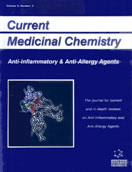Abstract
The leukocyte adhesion molecule DNAM-1 (CD226) is a member of the immunoglobulin superfamily and constitutively expressed on the majority of CD4+ and CD8+ T lymphocytes, natural killer (NK) cells, monocytes / macrophages, platelets and megakaryocytes and a subset of B lymphocytes. The poliovirus receptor (CD155) and its family member nectin 2 (CD112) have recently been identified as the ligands for DNAM-1. Interaction of DNAM- 1 with the ligands induces NK cell- and CD8+ T cell-mediated cytotoxicity and cytokine secretion. Upon antigen recognition by the T cell receptor, DNAM-1 physically associates with the αLβ2 integrin adhesion molecule LFA-1 and plays an essential role for LFA-1-mediated costimulatory signals for differentiation from naïve CD4+ T cells toward Th1 cells. Moreover, DNAM-1 is involved in macrophage and platelet activation and adhesion to vascular endothelial cells. Thus, DNAM-1 is involved in a variety of hematopoietic cell functions for innate and adaptive immunities.
Keywords: leukocyte adhesion molecule DNAM-1 (CD226), T cell-mediated cytotoxicity, macrophage, cytotoxicity, cytokine
 10
10

